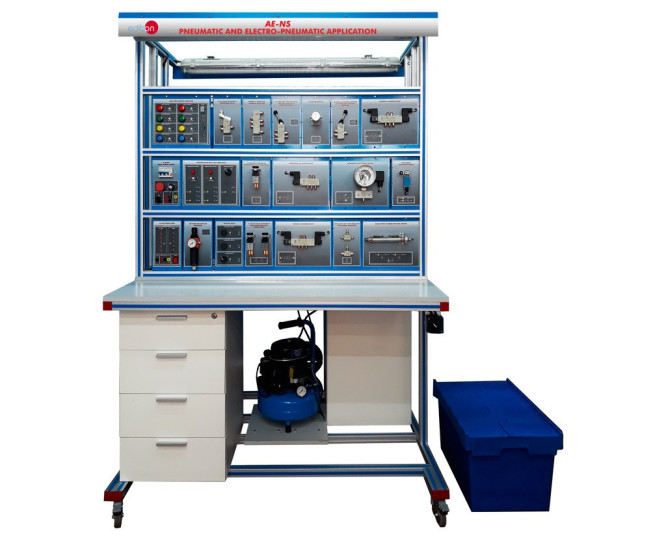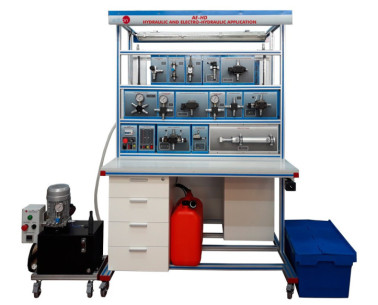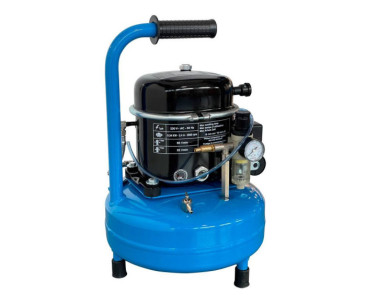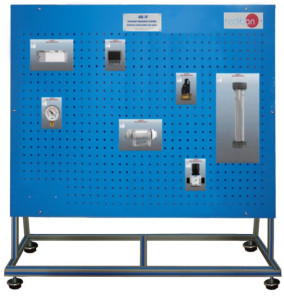The Pneumatic and Electro-Pneumatic Application, "AE-NS", is a modular application consisting of a great variety of optional kits and elements to configure the desired pneumatic and electro-pneumatic circuits.
The optional pneumatic kits available with the application, offers the necessary elements to perform a complete study of management and utilization of the actual industry pneumatic circuits
In the following lines there is a brief description of the objective to all pneumatic optional kits:
- PK-K0, Kit to study the pneumatics fundamentals: contain the components to understand the fundamentals concepts of the pneumatics circuits.
- PK-K1, Pneumatics kit: contain the components to understand the fundamentals and advanced concepts of the pneumatics circuits.
- PK-K1UP, Upgrade Kit for the PK-K1 to undestand the principles of Electro-Pneumatic: contain the additional modules to work with the PK-K1 kit to understand the fundamentals concepts of the electro-pneumatics circuits.
- PK-K2, Electro-Pneumatics kit: contain the components to understand the fundamentals and advanced concepts of the electro-pneumatics circuits.
- PK-K3, Pneumatics Actuators kit: is designed to teach the concepts behind the most common pneumatic actuators as rotary motors.
- PK-K4, Measurement and Proportional Control in Pneumatics kit: is a computer controlled kit, configured to perform the analog signal and the proportional controlover the pneumatic actuators to implement a PID control from the computer.
- PK-K5, Vacuum Technology kit: is designed to teach the most common componentsof the vacuum circuits, the PK-K5 include several types of cups to study the differences between them.
- PK-K6, Pneumatics and Electro-Pneumatic roubleshooting kit: is a kit of defective pneumatic components designed to teach the students the most common problem in pneumatic components, how to find them and detect the problems.
The EDIBON PLC unit is designed to work with the PK-K2 kits, and in conjunction offers the components to perform a complete understanding of pneumatic and electro-pneumatic technology with a PLC control of the pneumatic components, adding more practical possibilities to the unit.
There is available the optional elements of Silent Air Compressor, "SAC", that provide the air flow and the pressure needed to the correct working of the unit, the Workbenches to work at one or two sides, etc.
 クッキーの設定
クッキーの設定








